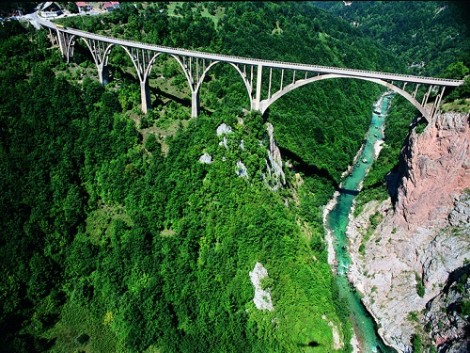Montenegro


Montenegro is located in the very south of the Adriatic Sea, in the heart of the Balkan mountains. Although small in terms of territory, Montenegro abounds in natural beauty, historical monuments and sunny weather almost all year round. It is a country full of contrasts. At a distance of only 100 kilometers, there are three different natural environments: the coast, the karst landscape and the region of high mountains. Montenegro is recognisable for its wild nature. In a relatively small area, there is a sea with beautiful beaches, rivers with unique canyons, clear lakes and breathtaking mountains… Such beauty takes your breath away, and upon first encounter, every traveler remains forever in love with Montenegro and always returns to it again and again. And again, no matter how many times he comes, the traveler feels as if he is here for the first time. Montenegro has five national parks. Each of them is special in its own way. “Durmitor” National Park is a magnificent mountain that hides numerous glacial lakes. “Lovćen” National park preserves the Montenegrin tradition and represents the harmony between the mountains and the sea. The National Park “Biogradska gora” has created a primeval forest and the magnificent canyon of the Tara River, they are only part of the many wonders of nature, which was generous when it decided to create Montenegro. The National Park “Lake Skadar” adorns the largest lake in the Balkans, and its peace is only disturbed by the flight of birds, and for some of them this is their only home. National Park “Prokletije” is the youngest national park in Montenegro. It covers three countries: Montenegro, Albania and Kosovo. On such a small area, one cannot but be jealous of the natural jewels and the large number of lakes and caves that leave everyone speechless. Someone said, “All the mountains on one side, Prokletije on the other.”

Included in the 20 most beautiful bays in the world, the Bay of Kotor is located between high rocks that are reflected in its blue water.
The bridge on Djurdjevica Tara, or simply the Bridge on Tara is one of the most visited and popular attractions in Montenegro, where thousands of tourists come every year to visit this majestic combination of nature and architecture.
Montenegro is the only ecological country in the world. Recognizing the importance and size of this wealth, the Montenegrin Parliament declared Montenegro an ecological state in 1988. Thus, the state became the protector of the untouched natural realm. Montenegro offers all types of vacations: sea, mountain, nautical, health, sports, entertainment, congress, hunting, ecological, etc.
Although it is small in size, it has a very long tradition and today it is known for its multi-ethical harmony, tolerance and harmonious relations between its peoples. In the cultures, on the surface of today’s Montenegro, traces and influences of Mediterranean, Central European, Eastern European and Oriental civilizations are recognizable. The cult of beautiful words continues today. Through centuries of struggle to preserve or gain freedom, through centuries of poverty and hunger, the word preserved dignity and strength, gave meaning.
I live in a small town in Montenegro, in Plav. Plav is a city that does not have many inhabitants, but it is a city that shows by example how people of different religions can live in one small territory, people who have different names and who love each other and these differences bring them together. This is a city where you can hear the call to prayer from the mosque, but also the bells from the church.

On a relatively small area, Plav has an extremely beautiful nature. In the heart of Plav is Plav’s Lake, the largest glacial lake in the Balkans. Lake Visitor is famous for its “floating island”. Lake Visitor has a glacial origin, its dimensions are not large – only 73 m by 92 m, which is why it is considered one of the smallest in Montenegro. In the “Prokletije” National Park there is Hrid Lake, the lake of happiness and a lake associated with numerous legends – a lake where fairies and shepherds bathed. From Gusinje, a new road sign directs us towards Ali Pasha’s springs and the village of Vusanje, and then the road leads to Oka Skakavice. The Plavsko-Gusinjski region is rich in water sources, among them Oko Skakavica, i.e. Savina’s eye, hidden in the Prokletija massif, stands out for its beauty. The Grlja waterfall leaves you speechless with its beauty. Plav and Gusinje have a long tradition and numerous cultural events. One of them is definitely Blueberry Days. This manifestation unites nations and preserves tradition for over 20 years. In the middle of July, people can enjoy the daily events, the promotion of the cultural and natural beauties of Plav and Gusinje, but also the taste of blueberry products, various delicacies and juices. Tourists can also enjoy the promotion of national costumes, both Plav and Gusinje, as well as from Montenegro. The cuisine and specialties of Plav and Gusinje leave everyone speechless. Starting with corn bread, paprika, kačamak, various turšija and jams, all the way to delicacies such as gurabija, hačajlja… Everyone who has the opportunity should visit Montenegro, especially my Plav and Gusinje, because I know that all those who come here are happy to return again and again.

Montenegro is a golden box full of gems that have yet to be discovered. The secrets hidden in the vastness of Montenegro can satisfy the imagination and lead to the strangest dreams. Mountains and people, springs, streams, rivers, lakes, caves, fortresses – everything has its own story. Waters are a special story of Montenegro. In some areas, there are springs, streams, water everywhere, and there are areas where every drop of water is a treasure.
Prepared by: Lejla Srdanović from Plav Montenegro


0 Comments